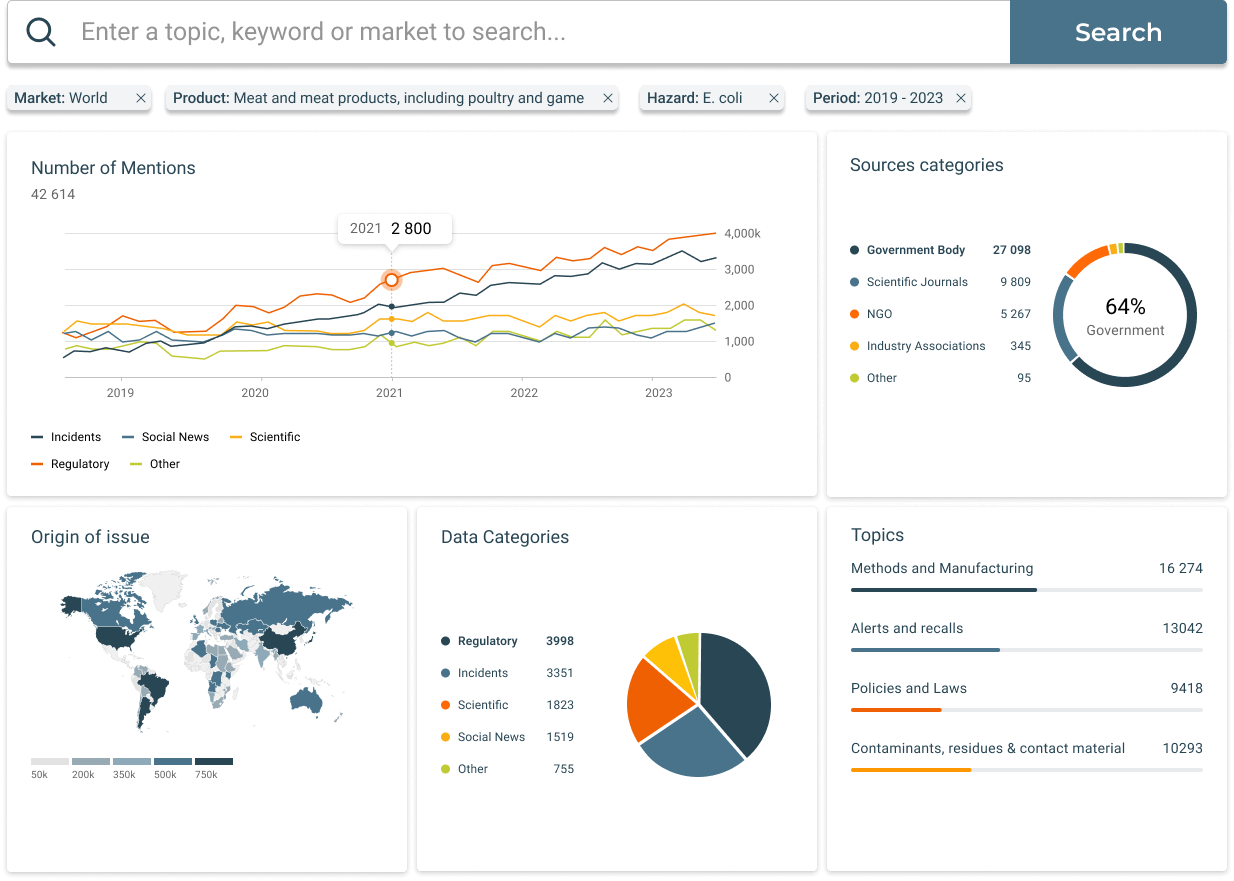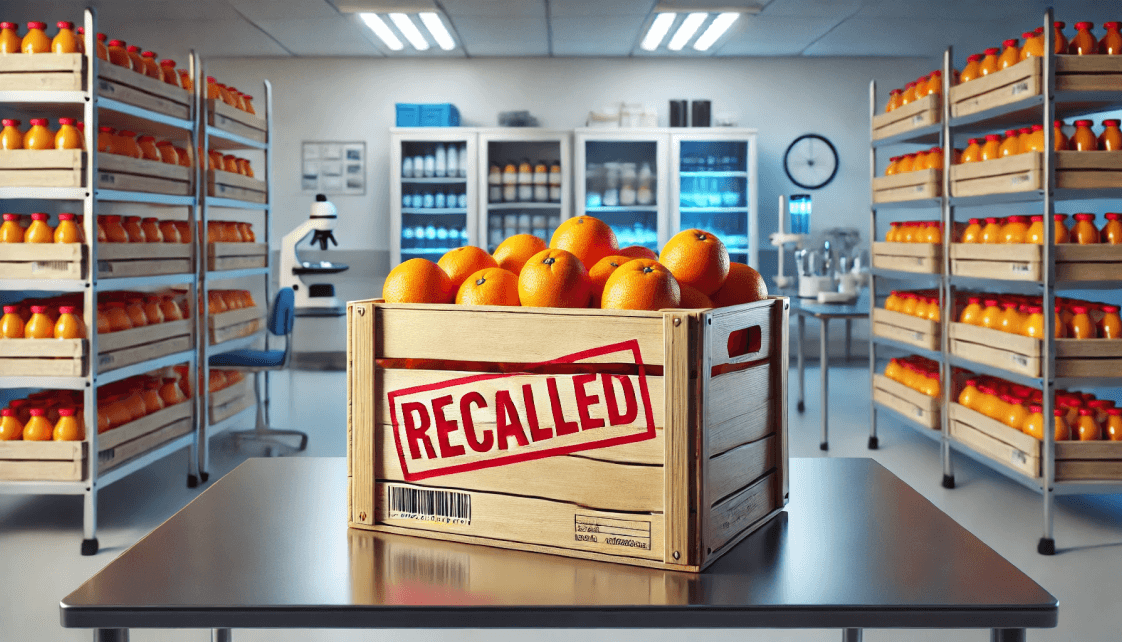In the food industry, a product recall can be one of the most challenging crises a company faces. Effective food recall management is essential for minimizing health risks, maintaining regulatory compliance, and preserving consumer trust. When a recall is managed poorly, it can lead to serious financial losses, legal ramifications, and long-term reputational damage. This guide provides an in-depth look at food recall management, from establishing a proactive recall plan to handling a recall event and taking preventive measures. With effective management practices, companies can navigate recalls with transparency and professionalism, protecting both consumers and their brand. Let's dive into this type of Food Recall
What is Food Recall Management?
Food recall management refers to the systematic approach that companies use to identify, track, and remove potentially unsafe products from the market. The goal is to protect public health by swiftly and efficiently containing and removing products that may pose risks due to contamination, mislabeling, or other safety issues. Effective recall management requires a comprehensive plan, clear communication, and coordinated actions involving multiple stakeholders—from internal teams to regulatory authorities, distributors, and consumers.
A robust food recall management system enables a company to respond quickly, comply with regulatory requirements, and minimize the impact on business operations. It also reflects a company’s commitment to consumer safety, reinforcing trust in the brand.
Key Components of an Effective Food Recall Management System
Successful recall management hinges on having a structured, well-prepared system in place. Here are the core components of an effective food recall management system:
-
Recall Plan: A recall plan outlines the steps the company will take in the event of a recall. This includes identifying the recall team, detailing roles and responsibilities, and defining protocols for decision-making, communication, and logistics.
-
Traceability System: Accurate product traceability is essential to quickly locate and remove affected products. A traceability system tracks products from raw materials to final distribution, allowing companies to pinpoint affected batches or lots.
-
Risk Assessment Procedures: Conducting a risk assessment helps determine the severity of the recall. By evaluating factors such as contamination levels, potential health effects, and exposure risk, companies can classify recalls appropriately and prioritize actions based on urgency.
-
Internal and External Communication Protocols: Clear and timely communication is crucial during a recall. Internal protocols ensure that all relevant departments are informed, while external protocols define how to communicate with regulatory bodies, distributors, retailers, and the public.
-
Documentation and Recordkeeping: Detailed records of every stage of the recall process are essential for regulatory compliance and post-recall analysis. Documentation includes information on affected products, testing results, recall actions, and communications.
These components form the foundation of a recall management system, ensuring that companies are prepared to act swiftly and effectively in the event of a recall.
Steps in the Food Recall Management Process
A food recall management process is typically divided into several key stages, from identifying the hazard to post-recall analysis. Here’s a closer look at each stage:
1. Identifying the Hazard
The recall process begins with the identification of a potential safety issue. This can be triggered by internal quality checks, consumer complaints, regulatory inspections, or laboratory testing. Early detection is critical, as it allows the company to act before the product reaches more consumers.
2. Assessing the Risk
Once a hazard is identified, a risk assessment is conducted to determine the severity and scope of the issue. This assessment helps classify the recall as Class I (serious health risk), Class II (moderate risk), or Class III (minor risk), allowing the company to prioritize response actions based on the potential impact on consumer health.
3. Initiating the Recall and Developing a Plan
After assessing the risk, the company must create a specific action plan tailored to the recall. This plan includes:
- Product Identification: Determining the affected batch numbers, expiration dates, and distribution channels.
- Distribution Halt: Stopping further distribution and notifying all parties in the supply chain.
- Communication Strategy: Preparing statements for stakeholders, including retailers, distributors, regulators, and consumers.
The recall plan should address every step needed to contain and remove affected products from circulation, while ensuring all stakeholders are informed.
4. Notifying Regulatory Authorities
Most countries require companies to notify regulatory authorities about recalls. This step ensures transparency and allows regulatory bodies to monitor the recall process. Authorities such as the FDA or EFSA may conduct inspections, request additional information, and oversee recall effectiveness to protect public health.
5. Executing Product Removal
The removal process involves physically retrieving affected products from distribution centers, retail locations, and potentially even from consumers’ homes. This may require coordination with distributors, retailers, and logistics partners to ensure that all affected items are accounted for. In some cases, companies may provide compensation to consumers who have purchased recalled items.
6. Public Communication and Media Relations
Clear communication with the public is essential in managing a recall. Companies should provide concise information on the recalled product, the nature of the hazard, and recommended actions for consumers. Many companies also use media outlets, social media channels, and company websites to reach a broader audience and provide updates.
Transparency during this stage not only protects consumers but also helps maintain public trust by demonstrating that the company is acting responsibly.
7. Tracking and Recordkeeping
Throughout the recall, maintaining comprehensive records is vital for both internal assessment and regulatory compliance. Records should include details on the recall's scope, actions taken, communications, and product retrieval status. This documentation serves as a basis for a thorough post-recall analysis.
8. Post-Recall Analysis and Preventive Actions
Once the recall is complete, companies conduct a post-recall analysis to understand the root cause of the issue and prevent future occurrences. This analysis may include reviewing production processes, improving quality control measures, and enhancing supplier verification. By learning from past recalls, companies can strengthen their recall management systems and minimize future risks.
Challenges in Food Recall Management
Managing a food recall presents numerous challenges that companies must be prepared to address:
-
Rapid Response Requirements: Recalls must be executed swiftly to minimize health risks. This requires companies to act under significant time pressure, often with limited information.
-
Coordinating with Multiple Stakeholders: Food recalls often involve coordination between suppliers, distributors, retailers, and regulatory authorities. Ensuring consistent communication and coordination can be complex, especially in a global supply chain.
-
Rebuilding Consumer Trust: A recall can damage a brand’s reputation, and companies must work hard to rebuild trust with consumers. Clear communication, compensation where appropriate, and a commitment to preventive actions are all crucial for restoring brand confidence.
Best Practices for Effective Food Recall Management
To navigate recalls effectively, companies should incorporate best practices into their recall management system:
-
Establish a Dedicated Recall Team: Assigning a team responsible for recall management ensures that trained personnel can act swiftly in a crisis. This team should include members from quality assurance, legal, public relations, and supply chain departments.
-
Conduct Regular Mock Recalls: Practicing recall scenarios allows the recall team to test and refine their procedures. Mock recalls help identify potential weaknesses in the recall process and improve response time.
-
Build Strong Supplier Relationships: A proactive approach to managing suppliers, including routine audits and quality checks, can help prevent recalls stemming from contaminated or defective raw materials.
-
Use Digital Tools for Traceability: Advanced traceability systems, such as blockchain or digital product tracking, can significantly enhance a company’s ability to trace products through the supply chain. This technology enables faster recall execution and improves accountability.
-
Maintain Transparency and Accountability: During a recall, transparency with regulatory bodies, business partners, and consumers is critical. Admitting fault where appropriate and detailing corrective actions demonstrates accountability, which can help preserve consumer trust.
Conclusion
Food recall management is a vital component of food safety, protecting consumers and ensuring compliance with regulatory standards. A well-structured recall management system enables companies to respond quickly, contain risks, and minimize the impact on business operations. By prioritizing best practices—such as implementing traceability systems, maintaining clear communication protocols, and conducting regular risk assessments—companies can strengthen their recall processes and reduce the likelihood of future recalls.
For food manufacturers, recall management goes beyond responding to isolated incidents; it’s about building a resilient, safety-focused organization. Proactive measures, strong supplier partnerships, and continuous improvement are key to managing recalls effectively and safeguarding the trust that consumers place in the brand. In an industry where reputation is invaluable, mastering food recall management is essential for long-term success.
Last Month's Food Recalls and Safety Incidents
Explore the latest food recalls, market withdrawals, and safety alerts in our free Food Safety Incidents Dashboard. Updated monthly and powered by SGS Digicomply, this dashboard provides a clear, filterable list of last month’s global food recalls and incidents, allowing you to stay informed on the products and hazards affecting the industry.

How manufacturers and companies can track and utilize global recall data:
SGS Digicomply continuously monitors and analyzes millions of data sources across over 160 jurisdictions. With easy-to-use filters for sources, locations, products, substances, hazards, and more, our platform allows manufacturers to track recall trends and gain actionable insights powered by AI-Copilot.
Explore our interactive demos to see these tools in action.

By combining diverse data sources, SGS Digicomply offers the most comprehensive and targeted screening of food safety data, contextualized with real-time lab data to identify emerging risks.





.webp?width=1644&height=1254&name=Food%20Safety%20Dashboard%201%20(1).webp)
